
Example
use http://www.philender/com/courses/data/hsbdemo, clear
regress write read math science
Source | SS df MS Number of obs = 200
-------------+------------------------------ F( 3, 196) = 57.30
Model | 8353.98999 3 2784.66333 Prob > F = 0.0000
Residual | 9524.88501 196 48.5963521 R-squared = 0.4673
-------------+------------------------------ Adj R-squared = 0.4591
Total | 17878.875 199 89.843593 Root MSE = 6.9711
------------------------------------------------------------------------------
write | Coef. Std. Err. t P>|t| [95% Conf. Interval]
-------------+----------------------------------------------------------------
read | .2356606 .0691053 3.41 0.001 .0993751 .3719461
math | .3194791 .0756752 4.22 0.000 .1702369 .4687213
science | .2016571 .0690962 2.92 0.004 .0653896 .3379246
_cons | 13.19155 3.068867 4.30 0.000 7.139308 19.24378
------------------------------------------------------------------------------
Interpretation_cons = 13.19155 -- The predicted value when all of the predictors equal zero.
_b[read] = .2356606 -- For every one unit increase in read, the predicted value for write increases by .2356606 when all other variable in the model are held constant.
_b[math] = .3194791 -- For every one unit increase in math, the predicted value for write increases by .3194791 when all other variable in the model are held constant.
_b[science] = .2016571 -- For every one unit increase in science, the predicted value for write increases by .2016571 when all other variable in the model are held constant.
Conditional Expectation
In the multiple regression model we can write the conditional expectation as E(y | x1, x2), which indicates that we are interested in in the effect of variable x1 on the expected value of y while holding the variable x2 constant.
Regression Equation

Prediction Equation

The Two Predictor Case

Squared Multiple Correlation

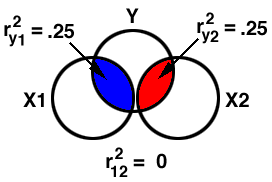

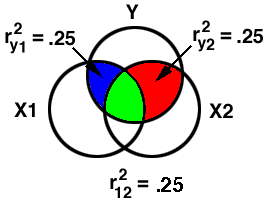
Regression Coefficients
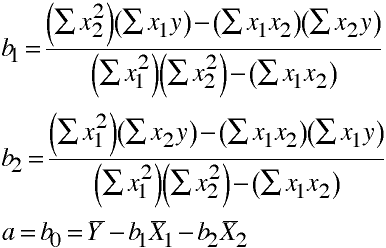
Sums of Squares

Raw Regression Coefficient vs Standardized Regression Coefficient
b vs β
Note
Prediction Equation in Standardized Form

Beta Coefficients
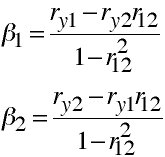
More on Betas
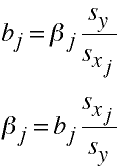
More on Squared Multiple Correlations
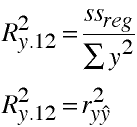
Even More Squared Multiple Correlation

Variance of Estimate/Standard Error of Estimate
The variance of estimate is also called the mean square error in the ANOVA summary table of the regression analysis.

The standard error of estimate gives an indicatin of how far, on the average, observations fall from the regression line.
Testing the Model
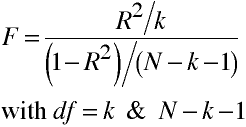
The Overall F-test
Interpreting Regression Coefficients
Interpreting Standardized Regression Coefficients (Betas)
Tests of Regression Coefficients
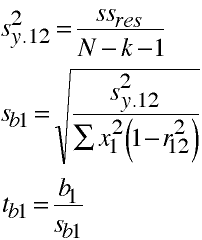
About Tests of Regression Coefficients
Note:
Comparing Variables
Interpreting R2
R2 has several interpretations:
R2/k
F = ----------------
(1 - R2)/(N-k-1)